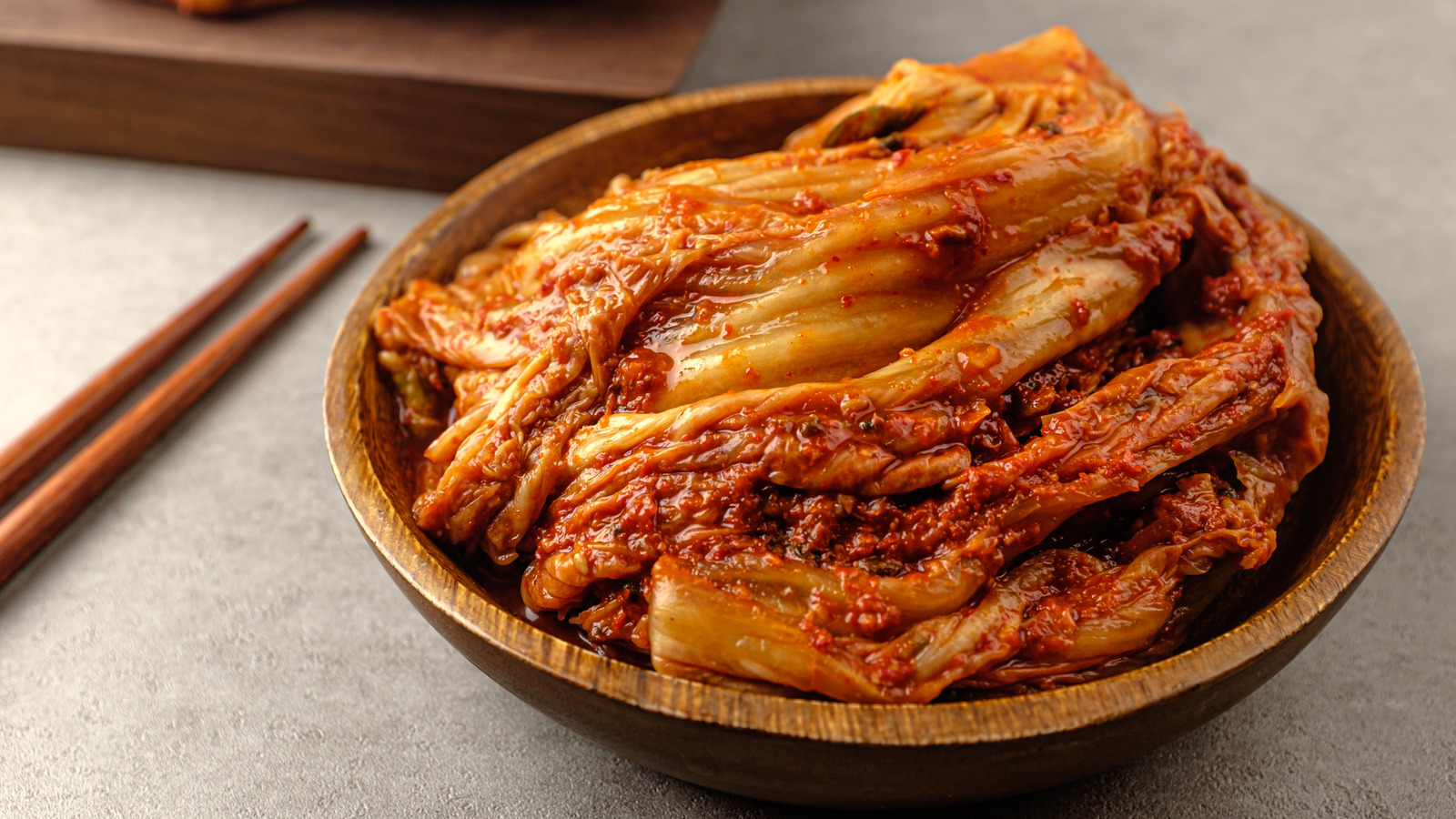
"The savory, spicy, and tangy dish that we know as kimchi originated in Korea as a means to preserve vegetables during the winter months. Rather than a specific dish, kimchi can be better defined as a practice of preservation centering around fermenting various ingredients - typically some type of vegetable. There are more than 300 different types of kimchi: spicy kimchis made from Napa cabbage, white ones made from radish, crisp versions that feature cucumbers, and even green ones made from mustard leaves."
"Kimchi is traditionally not vegan, as it contains fermented seafood (known as jeotgal in Korean), which gives kimchi that intense savory flavor of umami. This jeotgal can be made of anything from squid and anchovies to fish sauce or a paste of shrimps. So even if you spot a jar of a presumably vegan-looking baechu kimchi made from Napa cabbage or kkakdugi made from radish, that does not mean that it is, in fact, vegan. It could still contain jeotgal and seafood ingredients."
"Buying vegan kimchi isn't so confusing if you keep an eye out for a few things. For starters, it is a good idea to inspect the packaging of store-bought kimchi. Look for a vegan stamp, and, in case you don't find one, scan the ingredient list. If you spot jeotgal or any other form of seafood elements, such as fish sauce or shrimp paste, the kimchi is not vegan."
Kimchi originated in Korea as a winter preservation method and is defined as a practice of fermenting vegetables and other ingredients. More than 300 varieties exist, including Napa cabbage, radish, cucumber, and mustard-leaf versions. Traditional kimchi commonly contains jeotgal, fermented seafood such as squid, anchovies, fish sauce, or shrimp paste, which provides umami. Fermented seafood makes many kimchis non-vegan, but mushroom pastes and powders can substitute to achieve umami. Store-bought vegan kimchi can be identified by a vegan stamp or by checking ingredient lists for seafood elements.
Read at Tasting Table
Unable to calculate read time
Collection
[
|
...
]